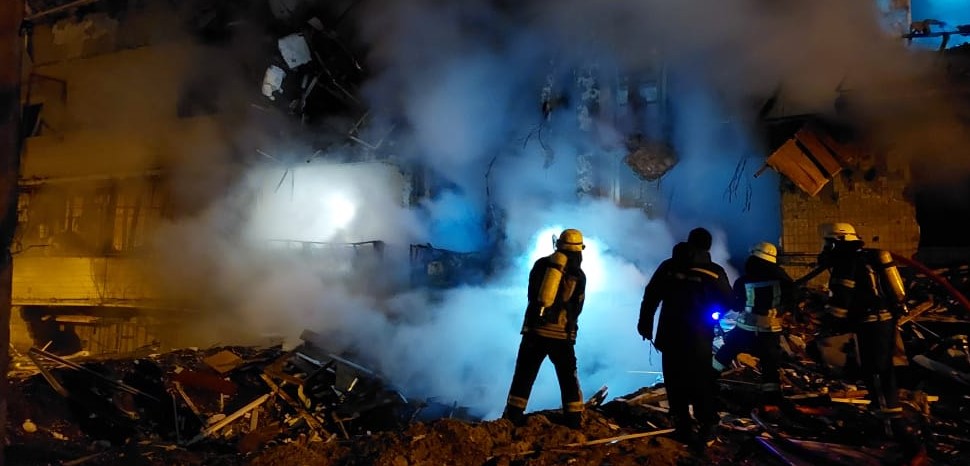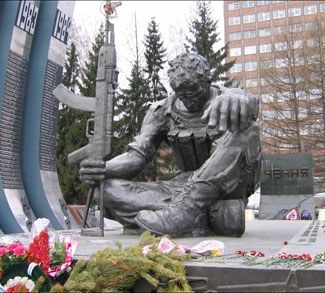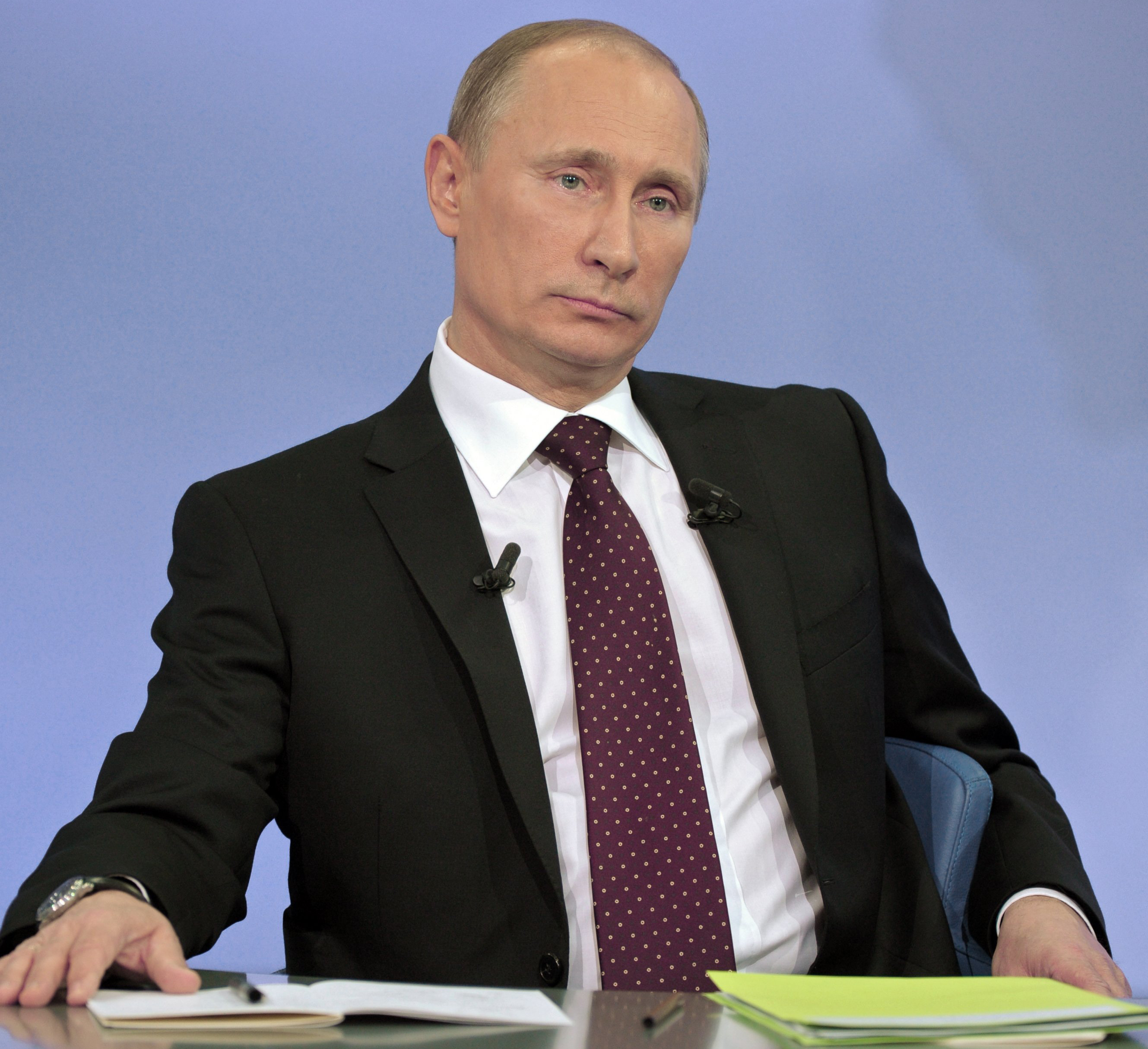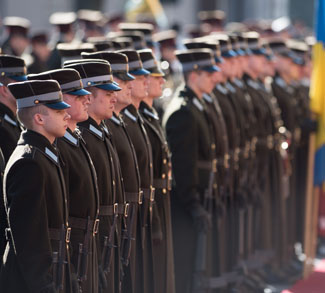The war in Afghanistan in 1979-1989 was a painful war of attrition for the Soviet Union, one where Moscow eventually had to give up due to victory remaining out-of-reach while losses became unacceptable. Can Ukraine become a similar war of attrition for Russia, a sort of defeat? At the beginning of the war, perhaps few would have believed, but as time passes, such a scenario seems to become increasingly possible. Contrary to the general atmosphere echoed by the media, numbers, and facts-on-the-ground do not suggest an easy Russian victory; rather, there’s much heavier Ukrainian resistance and Russian losses, and much slower Russian advance than expected. The conflict overall is starting to show signs of evolving into a war of attrition that Russia may not even be able to win.
Several episodes in the previous two days of the fighting suggest Ukrainian resistance is stiffer than expected, slowing the Russian advance:
- The western flank of the Russian offensive entering Ukraine from the Crimea aimed at Odessa, and crossed the river Dnieper on the 24th of February. Ukrainian forces retook the bridgehead and the Antonovsky bridge on the river by the morning of the 25th. Although Russians retook the bridge by the evening of the 25th, they only managed to reach Mikolayiv by the 26th.
- The eastern flank of the Russian offensive entering Ukraine from Crimea and aimed to establish a link with Russian forces in the separatist Donestk area. However, their advance has been halted at the town of Melitopol on the 24th, and Russians could only break through on the morning of the 26th, but the advance stopped again before it could reach Mariupol.
- After Russian airborne troops took Antonov Airport near Kyiv early on the 24th, Ukrainian forces retook it by the evening. Although Russians took the airport again on the 25th, this obviously wasn’t what they had planned.
- At time of writing there were virtually no territorial gains by Russia along the border and line-of-control between Kharkiv and the Black Sea.
Heavy Russian casualties suggest a time window of 2-3 weeks from now, within which Russia has to either achieve victory or, if it cannot, then after this time window pass it will be forced to admit defeat and stop any further advances. At that point, Russian casualties would be extremely heavy, as Javelin and Stinger missiles have helped the Ukrainians knock out Russian tanks and helicopters. According to Ukrainian sources, during the first two days of the conflict, the Russians lost 536 armored personnel carriers, 102 main battle tanks, 14 airplanes, 8 helicopters, with 3,500 of their soldiers killed in action, and 200 taken captive. If these numbers are true, the losses are especially severe given the fact that while the number of main battle tanks owned by the armed forces of Russia is usually given at 12,500, in 2020, citing an intelligence report, the website Russian Lenta claimed that fewer than 3,000 of them were actually operational. This is no surprise, as, after the fall of the Soviet bloc, such became the general trend in Warsaw Pact countries, that large quantities of Soviet-era military equipment, while already having become inoperable wrecks in various stages of decay through years of amortization and lack of maintenance, were still shown in official statistics. However, if Russia really has no more than 3,000 tanks, then the stated losses are devastating. As Russia lost 102 main battle tanks in two days, and the entire country has no more than 3,000, this means that if Ukrainian resistance remains stiff, Russia will lose 20-30% of all main battle tanks in its’ entire armed forces in just 10-16 days from now. This means that Russia either achieves victory within a time window of 10-16 days starting from the 25th of February, or if it cannot, then it has to halt all further advances, because by that time its’ losses will reach a level pushing its’ army to the breaking point. In such a scenario, the conflict could slide into a prolonged standing war of attrition which could be even worse for Russia if it is combined with a guerilla war behind their lines. Even taking into consideration the possibility that these numbers are not correct, even if the ratio between daily average losses to the number of tanks in Russia’s armed forces is two to three times more favorable for Russia than the one calculated above, it still means that the advance cannot go on for much longer than one month.
These losses also seem to show a gloomy picture for Russia if the conflict becomes a prolonged war: One needs different weaponry to advance in an invasion than what is needed to wage a defensive war of attrition. To continue the advance, the invading side needs complex and expensive weaponry, such as tanks and helicopters. To slow down such an invasion, and make it costly, or to make an occupation costly and problematic by effective guerilla warfare, Javelin and Stinger missiles with the capability of knocking out tanks and helicopters are a suitable choice, and while being much cheaper than tanks and helicopters, NATO countries appear to be willing to provide Ukraine a virtually infinite supply of these missiles. Thus the competition is between the pace NATO can deliver Javelin and Stinger missiles to Ukraine to replace the ones already used, and the pace Russia can manufacture tanks to replace the ones already shot.
The seemingly unexpected difficulties that Russia faces in its’ advance are way less surprising if we look into the details, and not only because of the large amount of Javelin and Stinger missiles supplied to Ukraine by NATO member states. In many aspects, the invasion against Ukraine is the toughest fight Russia has picked since the Second World War. Ukraine’s population of 41 million is more than a quarter of Russia’s 146 million, and Ukraine’s peacetime active military personnel of 200,000 is more than one-fifth of Russia’s peacetime active military personnel of 900,000. Hungary in 1956, Czechoslovakia in 1968, Afghanistan in 1979, Chechnya in the 1990s, and Georgia in 2008 were all nowhere near such proportions, and with the exception of Georgia, in these cases, Russia only had to fight rebels and not regular armies. Thus with no exaggeration, we can state that this conflict is really the most challenging military campaign for Moscow that it has started at any time since the Second World War.
If this really is the case, taking an overview of the possible outcomes of the war brings some interesting conclusions:
- Russia taking over all of Ukraine and setting up a pro-Russian puppet government in Kyiv seems to have been a Russian war goal at the beginning of the conflict, as Russia declared its intention to see the Ukrainian government removed. However, viewing the stiff Ukrainian resistance, this scenario seems increasingly out of reach as an occupation of western Ukraine may not even be possible, and even if somehow achieved, a prolonged and fierce guerilla war can be expected in the western half of the country with arms supplies from neighboring NATO member states, especially Poland and Romania. The Kremlin likely being aware of these factors makes this scenario increasingly unlikely. If Russian casualties remain as high, and Ukrainian resistance remain as fierce as they have so far been, pursuing this goal and refusing some kind of compromise could be the very road drawing Russia into a prolonged war of attrition that it will unlikely be able to win, and could eventually even result in outright defeat for Moscow.
- A second possible scenario could be splitting Ukraine into two: The western and northern half of the country has a strong Ukrainian cultural identity, mostly Ukrainian-speaking, with nationalist and pro-Western leanings. The eastern and southern half of the country on the other hand is culturally strongly Russified, largely Russian-speaking, with pro-Russian candidates having regularly won elections in this half of the country before 2014. Speculations on Russia aiming to split the country creating a pro-Russian puppet state of the eastern and southern half under the name of “Novorossiya” (“New Russia”) have been widespread ever since the pro-Western turn in Ukraine in 2014. Russia could push till the line of a desired “Novorossiya,” and when reached, only then offer negotiations. In case of any kind of Russian attempt to split the country in two, the long-term outcome depends on two main factors: One is whether the Western half of the country that remains out of Russia’s reach formally recognizes this outcome or not, and the other is whether if the population of the eastern half cooperates with Russia enough to consolidate its’ rule there. If the Western half recognizes the split and the Eastern half cooperates, then this could be a manageable scenario for Russia; however, if substantial guerilla activity rises in the Eastern half, supplied by Stinger and Javelin missiles by a Western half that refuses to recognize the split, then this can still end up in an Afghanistan-like war of attrition from which Russia will have to back off sooner or later. This largely depends on the attitudes of the population of the eastern half of the country. While up to until 2014, that half of the country regularly voted for pro-Russian candidates, and when starting the present war, Russian leadership seems to have expected them to greet Russian troops as liberators, there’s not much sign of anything like that discernible at present, which seems to make the scenario that’s favorable to Russia less and less likely. Also, as of the 27th of February, Russia still controls less than half of the territory of the eastern and southern regions that regularly voted for pro-Russian candidates, and as even in these areas, the civilian population does not seem to support the invading Russians, it is uncertain how much of these regions can Russia actually conquer. However even if Russia cannot take control of all of the eastern and southern half of the country, it can still choose an intermediate solution of simply grabbing as much of this territory as possible during its two-week time window, and then during negotiations, insisting on holding onto those areas.
- A third option could be avoiding prolonged war by quickly reaching an agreement on some kind of compromise, most likely the neutrality of Ukraine, which could be a viable outcome for both sides: Russia can avoid the embarrassment of not being able to win a prolonged war of attrition by starting negotiations as soon as possible, while Ukraine can escape further war as well as maintain its’ sovereignty and pro-Western leadership, while Russia again, in turn, wouldn’t need to worry about Ukraine joining NATO. If this scenario happens, Russia may be able to attempt to combine it with holding some territories in the east and south that it grabbed during the war.
To summarize this, the combination of advance slower than expected, and losses higher than expected suggests that a quick victory for Russia and the occupation of all of Ukraine may be out of reach. Thus, continuing the war among such circumstances will likely end up in a prolonged war of attrition that Russia may not be able to win, and may eventually end up in a defeat similar to what the Soviet Union suffered in Afghanistan in the 1980s, as it may not be able to replace its’ losses in tanks and other military vehicles and heavy weapons at the same pace as NATO can supply Ukraine with Javelin and Stinger missiles that are capable of destroying them. Recognizing this situation, Russia may eventually have to agree on a compromise on something like a neutral Ukraine after no more than a mere few weeks of fighting. Perhaps the most significant factor poses the risk of tempting Russia to continue pursuing the invasion even if the situation is the one described, if it believes a certain kind of favorable outcome to be achievable, while in reality, it is not. Such an option may be splitting the country into a western and eastern half, with the western half remaining under the current leadership, while a pro-Russian puppet government is installed in the eastern half. As discussed above, whether such a scenario would still be achievable for Russia seems impossible to tell right now, thus though it may be tempting enough for Russia to pursue its’ advance, it may end up in a situation where it’s unable to occupy most of eastern half of the country, or consolidate its’ power there, and thus be forced into a standing war among such uncomfortable and somewhat embarrassing circumstances. Whether the combination of high losses and slow advance is truly severe enough to force Russia into a choice between sliding into a prolonged war of attrition that it may not be able to win, or negotiating a compromise such as a neutral Ukraine as soon as possible to avoid the former, is a question that will ultimately be answered in the coming weeks.
*This article was originally published on February 27, 2022.
The views expressed in this article are those of the author’s alone and do not necessarily reflect those of Geopoliticalmonitor.com or any institution the author is associated with.




